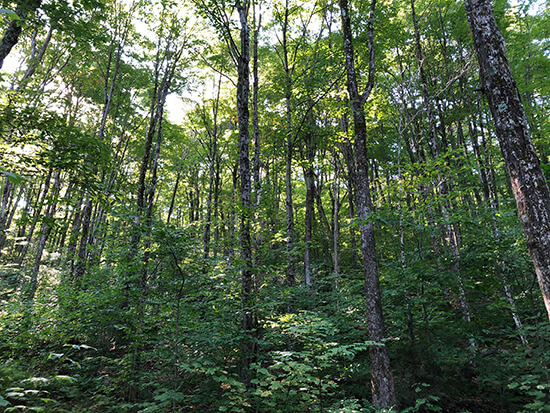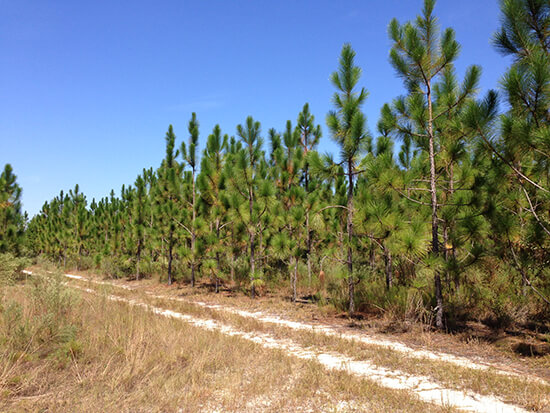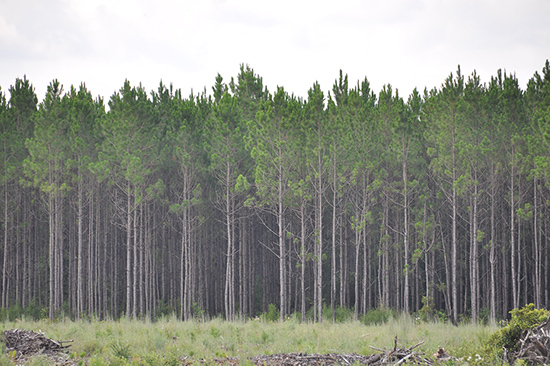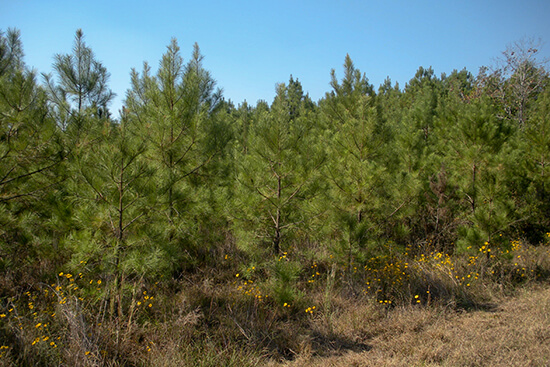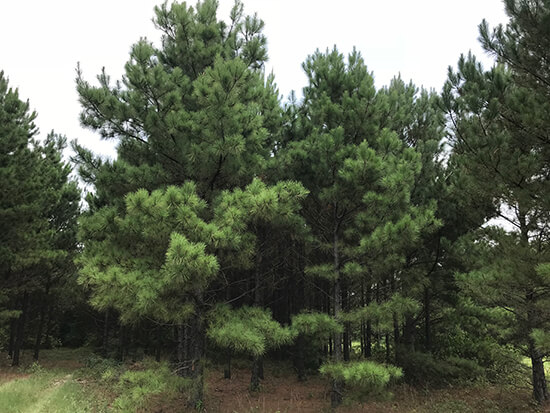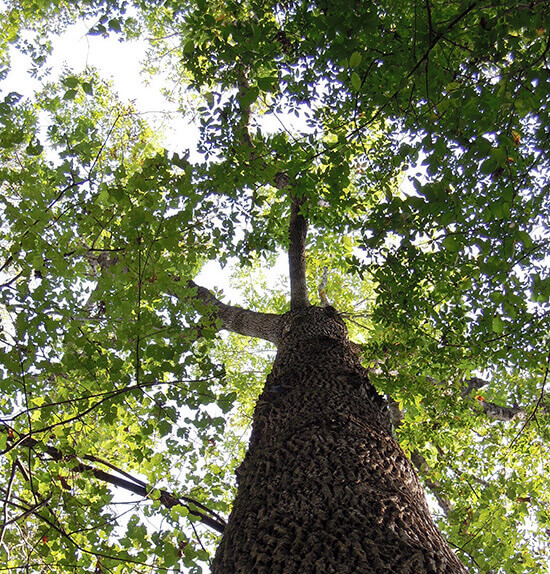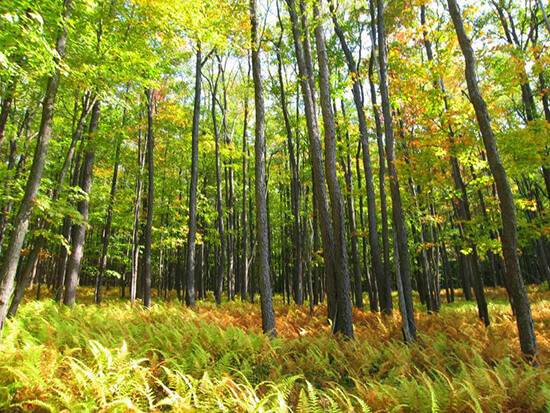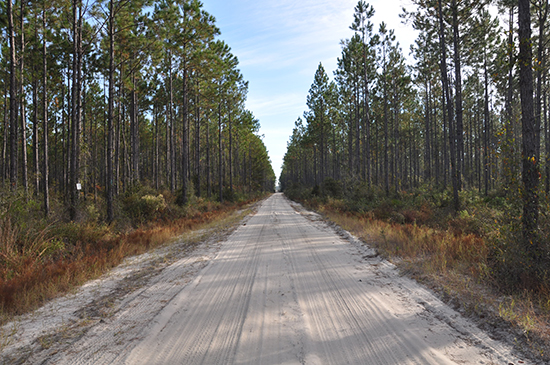Summary Update
COVID-19 Impact — The COVID-19 pandemic continues to affect timberland portfolios. In general, construction, sawmill capacity and sawtimber markets have been impacted to a greater extent than pulp and paper and pulpwood markets. Demand for lumber is primarily a function of both new housing starts and renovation and remodeling activity. Initial expectations were that both activities would be negatively impacted by the pandemic, but the opposite seems to be true. Though housing and lumber demand data reveal that new housing starts took a precipitous drop, renovation and remodeling activity has experienced substantial increases creating lumber supply chain challenges.
Housing starts fell precipitously at the beginning of the pandemic but are exhibiting initial signs of a quick recovery. The period from December 2019 to February 2020 averaged 1.61 million starts – the highest since the housing bubble in 2006 – 2007. Generally, annualized housing starts in excess of 1.5 million signal a strong and robust housing market that positively impacts lumber demand.
Lumber demand contracted as housing starts fell from 1.6 million (February 2020) when the pandemic started to a low of 934 thousand (April 2020) . While thankfully not reaching the historic low following the Global Financial Crisis (GFC) of 477 thousand (April 2009), the reduction still represents a 42% drop in annualized housing starts. Sawmills acted accordingly by reducing, and in some cases even curtailing, production. Beginning in mid-April, sawmills added back shifts and capacity idled at the beginning of the pandemic. With the surge in lumber demand from new home construction coupled with unexpectedly robust renovation and remodeling activity, lumber, particularly treated lumber, has been in short supply.
Please contact us if you would like to read a complete version of our third COVID-19 update or any of the previous letters .
Timber Prices
Southeastern — The effects of COVID-19 became evident during the second quarter. All major pine products saw noticeable decreases in reported stumpage prices. Forest2Market® reported a 9.4% decrease in Southern pine sawtimber prices over the second quarter of 2020; prices ended the quarter 10.1% below last year’s level. Pine chip-n-saw prices held relatively stable, dropping only 0.2% over the quarter, ending the year 1.8% below year-ago prices. Pine pulpwood prices fell 14.0% while prices remain down 9.1% year-over-year. Both major hardwood products also experienced declines. Hardwood pulpwood prices decreased 13.8%, while hardwood sawtimber prices dropped 12.3%.
Southeastern Timber Prices

Northern Hardwoods — COVID-19 concerns continue to weigh on hardwood log markets. The lack of meaningful domestic demand coupled with slow-to-recover export demand created significant challenges for sawmills and log exporters in the region. Specifically, Chinese lumber and log demand has not yet returned to “pre-COVID” levels which has kept prices depressed. According to the Pennsylvania Woodlands Timber Market Report, black cherry prices fell 10.4% during the first quarter (the most recent publicly reported pricing), ending the quarter 32.5% below year-ago levels. Northern red oak prices increased 15.5% over the quarter. Hard maple prices dropped 5.5%, ending the quarter down 6.7% year-over-year. Soft maple increased for the third consecutive quarter, rising 8.3% during the quarter, ending 5.1% above year-ago levels.
Hardwood markets in Wisconsin retracted over the second quarter. Sawlog prices decreased as sawmills had no trouble building yard inventories. Hard maple and birch demand was flat to slightly decreasing as domestic consumption and log exports remained depressed. Hard maple boltwood demand softened as demand for flooring has decreased. On the positive side, veneer log demand continued to be stable.
Northeastern Hardwood Timber Prices

Pacific Northwest — Pacific Northwest markets experienced declines in demand over the second quarter of 2020. Log Lines® reported that Pacific Northwest average delivered prices for Douglas-fir #2 logs decreased 6.5% over the quarter, ending the quarter 4.5% below year-ago levels. Whitewoods (i.e., true firs and hemlock) average delivered log prices dropped 2.8% and ended the year 3.5% behind last year’s level.
Despite some mill curtailments and shutdowns, domestic log demand was steady throughout March and April. The decreases in log purchases at local mills experienced in March leveled off by mid-May due to log inventories beginning to decrease. Since early June, competition and log prices have increased, some prices reaching well into the $700/mbf range.
Pacific Northwest Log Prices

Product Prices
Lumber and Panels — Lumber and panel prices rebounded over the quarter, reaching levels last reported in 2018. Increased domestic lumber demand for home remodels and repairs combined with logistical supply issues helped propel prices upward. The Random Lengths® Framing Lumber Composite Price increased 26.8% over the quarter, ending the quarter 36.4% above last year’s level. The Structural Panel Composite Price increased 16.3% over the quarter, ending 35.7% higher than year ago prices.
Lumber and Panel Prices

Pulp and Paper — Pulp, paper and boxboard prices experienced negligible changes over the second quarter. The benchmark NBSK (northern bleached softwood kraft) pulp price index increased 2.2% over the quarter, ending 7.6% below year-ago levels. U.S. Newsprint (27.7 lb.) prices decreased 4.7% over the quarter, falling 13.7% below last year’s level. Freesheet and boxboard prices held flat over the quarter.
Pulp and Paper Prices ($/short ton)

Timberland Markets
Transactions — The headline deal of the second quarter was Rayonier’s purchase of Pope Resources and its 125,000 acres in Washington for a reported price of $525 million. The transaction had been in the works for several months. In California, Soper-Wheeler is reportedly under contract to sell 90,000 acres to an undisclosed buyer.
In the Northeast, Jamestown closed on its purchase of 42,500 acres in Pennsylvania, New York, and Indiana from Danzer for a reported price of $85.8 million. PotlatchDeltic announced an agreement to sell 72,000 acres in Minnesota to The Conservation Fund for $48 million.
Finally, in the South, Forest Investment Associates (FIA) completed its sale of an 11,800-acre package in Texas to a private buyer for over $3,000/acre. In Georgia, Rayonier has reportedly found a buyer for its 13,500-acre package although the price was not known at the time of publishing.
Transactions in Progress — With the global coronavirus pandemic ongoing, the timberland transactions market has continued to slow. There are a couple of major transactions that are ongoing, however, headlined by Seneca Resources 90,000-acre offering in Pennsylvania and New York. Multiple sales processes have already been put on hold, but a few small offerings continue to hit the market. However, the market for timberland looks to be slow for the foreseeable future as travel restrictions continue to hamper field review efforts.
International Update
The COVID-19 pandemic continued its march across the globe during the second quarter with the most dramatic case surge experienced in the Americas. Despite this backdrop, the forest product markets showed surprising resiliency. Lumber demand in the U.S. and Asia rebounded strongly with corresponding price movements. After initially weathering the storm, pulp markets have demonstrated softness, driven primarily by the reduced demand for printing and writing paper grades. Pulp markets linked to consumer demand have shown more strength, but with excess pulp in the market, price support has weakened.
Log markets rebounded strongly as China resumed log purchases, putting upward pressure on Pacific rim log prices even with EU sourced supply finding its way into Chinese ports. Notably, an early quarter post-shuttered New Zealand forest products sector saw meaningful spikes. The Forest Amendment Bill continues moving through New Zealand Parliament with its promise of enhancing log supply to local mills. Criticism remains with research showing that curtailment or log export restrictions would have a net negative impact on GDP and economic activity in the sector. Mixed reports on Australian housing has caused some concern but despite the COVID-19 dynamics, the market is currently stable with low interest rates and credit availability.
Chile — During the second quarter, Chile continued to manage the challenges associated with COVID-19. The country has remained a regional leader in testing strategy and data driven quarantine. A total of 1,322,503 tests have been performed during the pandemic, the highest per-capita test rate in South America and a key data source for the government’s pandemic management programs. At the end of the quarter, there were 38,649 active cases and 6,554 COVID-19 fatalities in Chile. Santiago continues to be the country’s hot spot while other areas of the country have varying degrees of infection and accompanying restrictions.
To complement the health-measures adopted to combat the pandemic, Chile’s government implemented an aggressive multi-billion-dollar economic support package to provide relief to families and small businesses, as well as drive additional public investment and economic reactivation measures.
The forest industry continues to operate as an essential activity under Chilean regulation. About 80% of the forest industry continues operating while adopting appropriate health measures to decrease the probability of significant outbreaks. Forest exports grew by 12.4% from April to May but were still 21.7% lower than a year ago. Although the industry continues operating and supplying both domestic and export markets, as economic activity has been reduced log markets have felt headwinds.
Brazil — Second only to the U.S. in case count, Brazil has been severely affected by the COVID-19 pandemic. Like in the U.S., the lack of a coordinated federal approach has driven local, state and municipality specific controls. Brazil is approaching a total of two million cases with health services in some of the largest cities experiencing constraints.
At end-of-quarter, the Brazilian Real sat at 5.48 vs the U.S. dollar (5.3% quarter over quarter weakening), reflecting the uncertainty around the economic impact of the outbreak. During the quarter, the BRL:USD spot rate ranged from a weak point of 5.89 mid-May to 4.82 in early-June. General economic activity has slowed, inflation remains historically low and, in response, the Brazilian Central Bank further reduced the SELIC to an all-time low of 2.25%.
Forest product market activity linked to the domestic market, such as wood panels and paper, fell year-over-year, led mostly by COVID-19 related slowdowns. Pulp producers were able to maintain production; however, given oversupply of pulp in the market due to the contraction in printing and writing demand, prices have seen weakness.
Economic News
Housing — June housing starts showed marked improvements following the major declines reported in April. Housing starts ended the quarter at a seasonally adjusted annual rate of 1.186 million units. The June 2020 rate was 17.3% above the revised May rate of 1.011 million units, but 3.8% below the June 2019 rate of 1.233 million units.
Mortgage Rates — 30-year mortgage rates ended the quarter around 3.25% and continued to slide into early July. Underwriting standards appear to be tightening; however, banks are cautious about borrowers’ ability to repay given the coronavirus crisis.
Jobs — June’s employment numbers, which revealed the biggest single-month payroll gain in the nation’s history, marked the second month in a row that sharply exceeded expectations. The June report showed payrolls jumped by 4.8 million vs. economist expectations of a 2.9 million increase.
Consumer Confidence — Consumer confidence index rose to 98.1 in June from 85.9 in May, a sharp increase, but remains far below the 20-year high of 132.6 in February.
Inflation — U.S. consumer prices increased by the most in nearly eight years in June as businesses reopened, but the underlying trend suggested inflation would remain muted and that the Federal Reserve will keep injecting money into the ailing economy.
Trade Deficit — U.S. trade deficit widened in May as both exports and imports fell. Exports of goods were the lowest since August 2009 amid weak global demand caused by coronavirus disruptions, resulting in a seasonally adjusted deficit of $54.6 billion, an increase of 9.7% and the widest since December 2018.
Interest Rates — The FOMC voted in June to hold their benchmark short-term borrowing rate in the range of 0% to 0.25% and is expected to keep it there until the economy has recovered from the coronavirus crisis. The yield on the 10-year note ended the quarter around 0.64%, down from just over 2% a year ago.
Oil Prices — Oil prices have rebounded sharply from April 2020 lows when the market briefly saw negative prices driven by a lack of storage capacity, with prices currently around $40 a barrel.
U.S. Dollar — The U.S. dollar, as measured by the U.S. dollar index, ended the quarter at around 97, having trended down from levels closer to 101 at the beginning of the quarter.
The FIA Timber Economics “Quarterly Dashboard”

The FIA Timber Economics “Quarterly Dashboard”


